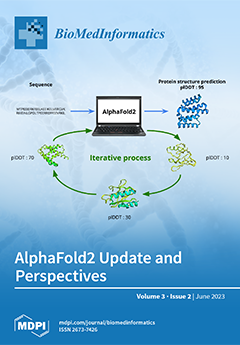Open AccessStudy Protocol
Status of Omics Research Capacity on Oral Cancer in Africa: A Systematic Scoping Review Protocol
by
Lawrence Achilles Nnyanzi, Akinyele Olumuyiwa Adisa, Kehinde Kazeem Kanmodi, Timothy Olukunle Aladelusi, Afeez Abolarinwa Salami, Jimoh Amzat, Claudio Angione, Jacob Njideka Nwafor, Peace Uwambaye, Moses Okee, Shweta Yogesh Kuba, Brian Mujuni, Charles Ibingira, Kalu Ugwa Emmanuel Ogbureke and Ruwan Duminda Jayasinghe
Cited by 1 | Viewed by 1810
Abstract
Over the past decade, omics technologies such as genomics, epigenomics, transcriptomics, proteomics, and metabolomics have been used in the scientific understanding of diseases. While omics technologies have provided a useful tool for the diagnosis and treatment of diseases globally, there is a dearth
[...] Read more.
Over the past decade, omics technologies such as genomics, epigenomics, transcriptomics, proteomics, and metabolomics have been used in the scientific understanding of diseases. While omics technologies have provided a useful tool for the diagnosis and treatment of diseases globally, there is a dearth of literature on the use of these technologies in Africa, particularly in the diagnosis and treatment of oral cancer. This systematic scoping review aims to present the status of the omics research capacity on oral cancer in Africa. The guidelines by the Joanna Brigg’s Institute for conducting systematic scoping reviews will be adopted for this review’s methodology and it will be reported using the Preferred Reporting Items for Systematic Reviews and Meta-Analyses extension for Scoping Reviews (PRISMA-ScR) checklist. The literature that will be reviewed will be scooped out from PubMed, SCOPUS, Dentistry and Oral Sciences Source, AMED, CINAHL, and PsycInfo databases. In conclusion, the findings that will be obtained from this review will aid the in-depth understanding of the status of oral cancer omics research in Africa, as this knowledge is paramount for the enhancement of strategies required for capacity development and the prioritization of resources in the fight against oral cancer in Africa.
Full article
►▼
Show Figures




